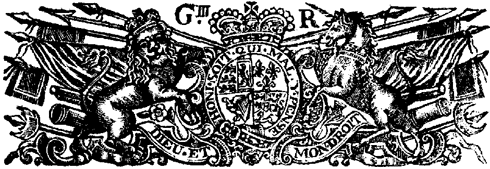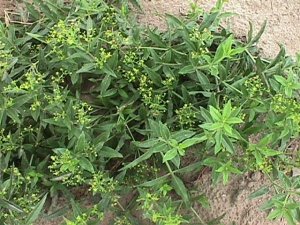

The First Foot Guards
We are a Revolutionary War
reenactment group based in Boston MA,
accurately portraying the royal household regiment that is now known as
The Grenadier Guards
Where did the Redcoat red dye come from?
Madder
Madder is a vegetable dye that
has been used since prehistoric times along with the blue dye Woad). A piece
of fabric found in the tomb of King Tutankhamen was found to have been dyed
with madder.
Madder is found in the roots of plants of the madder family (Galium, Asperula),
the greatest concentrations occur in species of Rubia, especially the European
Rubia tinctorum.
At a time when cloth was one of the most important commodities for trading and industry, fabric dyes were often worth their weight in gold. The colors that were easy to produce from nature (browns and blacks) were less costly than bright colors. Red - a difficult color to produce - was the most coveted color, and red fabrics were often associated with royalty.
The genus Rubia gives its
name to the plant family Rubiaceae.
Family characteristics include square stems; opposing narrow leaves, usually
arranged as whorls at intervals along the stem; and small four or five petaled
flowers.
Other familiar plants in the Rubiaceae are Galium or 'Bedstraw' and 'cleavers',
and Asperula odorata 'sweet woodruff'. These are hay-smelling plants that
were used in straw bedding for its pleasant aroma and as an insectifuge. They
were also used as a mild abrasive for polishing metal-work, and iare today
used as fodder for animals.
Woodruff is also used to flavor the German May wine. Cleavers is so called
because with its small delicate spines it will attach itself to your clothing.
Other tropical members of the family are Gardenia, Ipecac (used to induce
vomiting) Cinchona (used to extract quinine) and
Coffee (used to make Dunkin Donuts and Starbucks rich.)
'Dyer's madder' or 'Turkey Red' were used to dye fabrics such as the red coats of the Redcoats. Here 'Turkey' refers to the country, which was an important source of the dye. This and the artists' pigment 'rose-madder' were two of the products made from these plants. In the nineteenth century the dyes in madder (alizarin and purpurin) were identified, then synthesized. Alizarin was extracted 1868 from coal-tar, and many other useful products began to be isolated from this source. The dyes are seldom extracted from plants today.
The plant grows in southern England and continental Europe, but was traditionally imported to Britain from Holland where large areas of madder were grown in the sandy soil. Madder is easy to grow but difficult to start from seed. The plant needs to be grown for three years before the first harvest.

Rubia tinctorum, or Madder
The 'tinctorum' is a Latin description of its dyeing characteristic - it
is the same word root as in 'tincture'.
Madder has sometimes been taken medicinally for amenorrhoea, dropsy and jaundice.
When taken orally it gives a red color to urine and mother's milk and to the
bones of animals. We do not recommend its use!
Roots of the madder plant are dried, crushed and hulled. All parts of the madder plant contain the pigment, but the roots have the largest concentration. The roots are boiled in weak acid to dissolve the dye, and fermented (in which the glycosides to hydrolyze to anthraquinones).The extracted dye is made into a pigment by dissolving the dye in hot alum (aluminum potassium sulphate; AlK(SO4)2 · 12 H2O) solution, and precipitating the pigment with soda or borax. The dye was consolidated into small blocks for transportation.
Unlike indigo and other dyes, madder has to be mordanted before it will dye a fabric, which makes the process more difficult and variable. The pigments were commonly re-used giving a weaker color such as salmon, or they could be used with other dyes to give a range of colors - See offsite link
Given the difficulty of the dyeing process, it is highly likely that the Redcoat wool came in many different shades of red when it was new. Add to that the natural sun-bleaching in the field, and the continual soaking and drying experienced by the soldiers, then we would definitely see a range of reds in the Crown Forces. Officers' coats might well be dyed with the even more expensive Cochineal dyes, extracted from desert insects (and also used as a food dye!)
The mills in Stroud turned out
much woolen fabric in
Stroudwater Baize became famous
The Whole Art of Dyeing
Original French publication of 1669, translated and published in London 1705.
How Stuffs
must be Allomed, particularly for Reds
For every Pound of Stuff, hang Rain or running water over the fire adding
one third part of the Starch or Bran water; put in 2 oz of Allom, one ounce
of Tartar, when it boils and froths, first skim it, then put in the Stuff,
stir it very well about for an Hour, then take it out and rince it. The quantity
of Allom must always be double to that of Tartar.
To Dye Madder Red
Take 3 lb of Allom, two Pound and half of white Tartar, a quarter of a pound
of Fenugreek, two quarts of Wheat bran, boil all in the copper, then put in
the stuff and let it boil 2 hours and half, after which take it out, cool
it very well and hang it out for one Night; then to dye it, take 7 pound of
Madder, an ounce and a half of Aqua Fortis, a Pint of Wheat Bran, put them
into the copper, stir them very well about, and when the stuff have been very
well rinced in the dye, then wind it very swift upon a Roller and tumble it
about the Copper for an Hour at least, taking care that the Fire keep it boiling
hot; after which take it out and rince it.
To Dye Red
First take three Pound of Allom, two pound of Tartar, half a pint of Wheat
Bran, in proportion to twenty three English yards of cloath, then put more
water into the Copper, and add 6 Pound of good Madder and a glass full of
Vinegar, let the Dye be hot and then put in the Cloath, stirring it about
till it hath sufficiently imbibed the Red Colour, then rince it out, and you
will find it of a beautiful red, always pre-supposing that the Cloath hath
been first boiled three hours in Allom and Tartar.
Geneva Madder Red
Take 3 pound of Allom, one pound and half of Tartar, boil the stuff in it
an hour and half, then pour off the Water and put fresh water into the kettle,
make a liquor of ten pounds of Madder, four oz of Potashes, and some urine,
and boil it off when it hath dissolved one night.
To Dye English Red
Take 3 pound of Allom, two pound of white wine tartar, 31/2 oz of Ceruse (White
Lead), a pint of Wheaten Bran, and boil the Cloth in this liquor an Hour and
a 1/2, and leave it to soak a whole Night in the suds, and after it is rinced
out, take for every piece of cloth, six pound of good madder, two ounzes of
Orlean, an ounce and half of Turmerick, two ounces of aqua satis, let the
cloth remain three quarters of an Hour upon the roller, and you will have
a good English red, then rince it out.
Offsite link to the history of the Stroudwater woolen mills in Gloucestershire, which specialized in Stroudwater Red (for red coats!) and Stroudwater Baize (green wool for items such as billiard tables.)
Onsite link to a history of the English woolen industry
NEXT
ARTICLE
Go to
"This Date in History"
Click